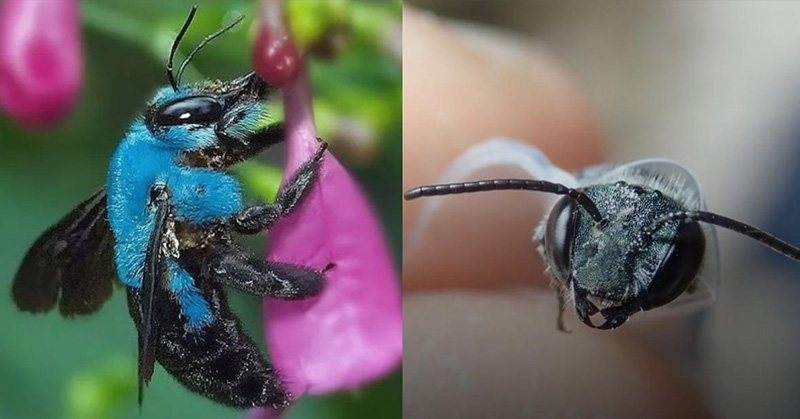It has been years since anyone spotted the extremely rare Blue Calamintha Bee in Florida. So long, in fact, that scientists and conservationists were afraid that the insect may have gone extinct altogether.
That speculation was put to rest this month when Chase Kimmel, a researcher for the Florida Museum of Natural History, found one of the blue beauties for the first time since 2016. (1, 2)
The Blue Calamintha Bee
Currently, the bee, known in the scientific world as Osmia calaminthae, is thought to only inhabit the Lake Wales Ridge region of the sunshine state. Its existence relies on the endangered Ashe’s calamint plant that grows in that region, which is considered to be one of America’s fastest disappearing ecosystems. (1, 2)
Kimmel, along with his advisor Jaret Daniels, is working on a research project about the bee to hopefully have it qualify for protection under the country’s endangered species act. The goal of the project is to determine the Blue Calamintha bee’s (1):
- Population and distribution
- Nesting and feeding habits
The bee is characterized of course by its blue hue, but also by its unique head-bobbing pattern and facial hairs it uses to collect pollen from the calamint plant. (1)
Another behavior that separates it from other species of bee is its living arrangements. Unlike most bees, who live all together in hives, the Blue Calamintha lives alone. (1)
Due to a lack of citings in recent decades, very little is known about the bee beyond this basic information. The more we know, the more empowered we are to help save the bright blue insect from extinction. (1, 2)

FLORIDA MUSEUM PHOTO BY CHASE KIMMEL
The Lake Wales Ridge Region
Recognized globally as one of the most biodiverse regions of the world, the Lake Wales Ridge region of Florida is home to many rare species of plants and animals. These highly specialized habitats were created when the state was primarily underwater. Sections of land that were high enough to appear above the water created isolated areas for incredibly unique species to develop and adapt to their specific environment. (1)
Now, of course, the area looks quite different and each ecosystem is not separated by water, leaving these habitats exposed and vulnerable. (1)
“It’s one thing to read about habitat loss and development and another to be driving for 30-40 minutes through miles of orange groves just to get to a really small conservation site,” Kimmel said. “It puts into perspective how much habitat loss affects all the animals that live in this area.” (1)
Read: Want to Help Bees? Leave the Dandelions Alone This Spring
A Bee Brought Back to Life
Kimmel and Daniels have high hopes that through their research they will learn much about the bees and what needs to be done to reinvigorate the population. They also are excited to see what else they discover about the various plants, animals, and insects that live there. (1, 2)
“We’re trying to fill in a lot of gaps that were not previously known,” Kimmel said. “It shows how little we know about the insect community and how there’s a lot of neat discoveries that can still occur.” (2)
If you are interested in supporting this project, you can visit the Florida Museum of Natural History’s website for more information.
Keep Reading: A small city is devoting 1,000 acres of land to America’s vanishing bees

